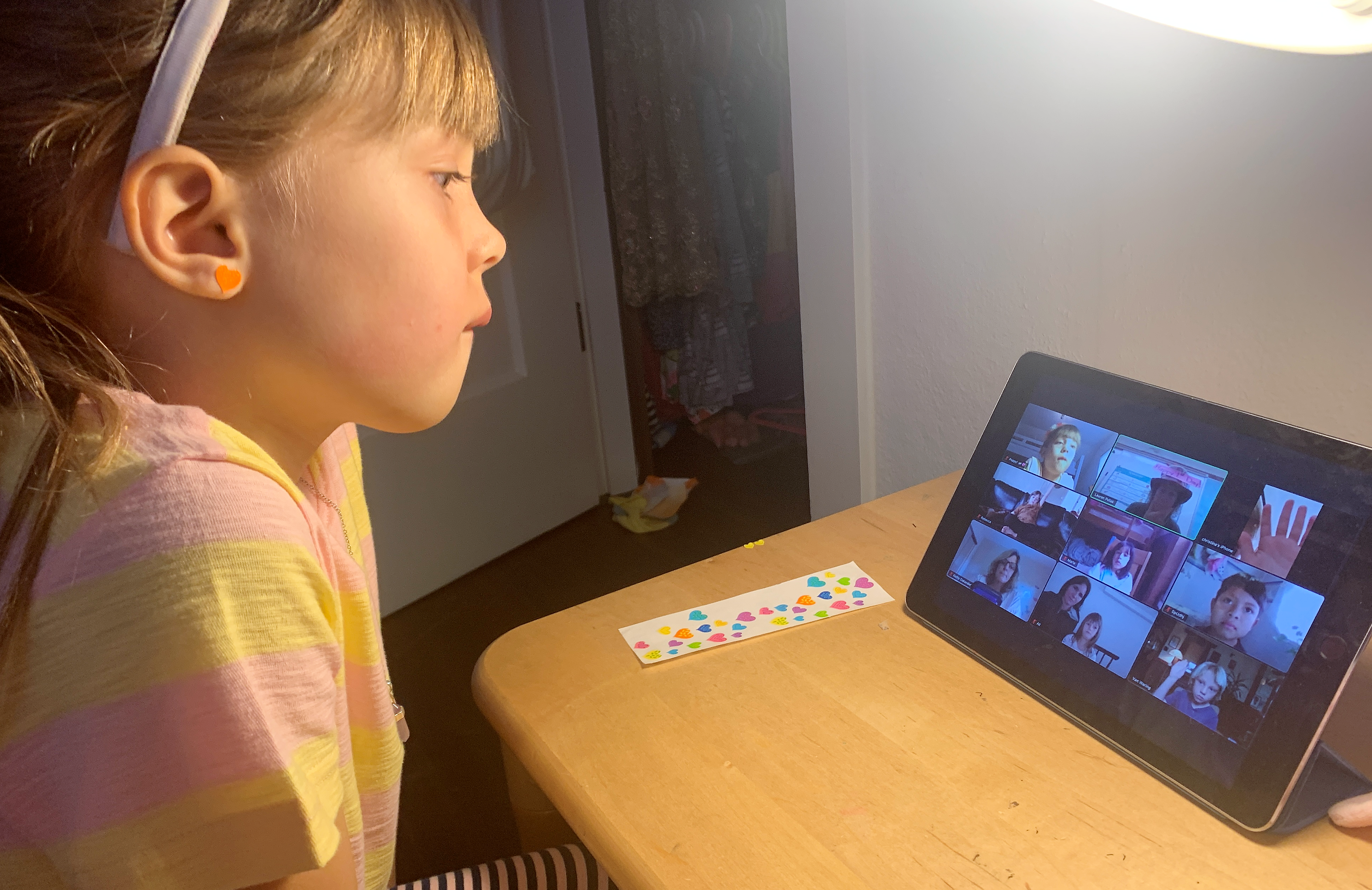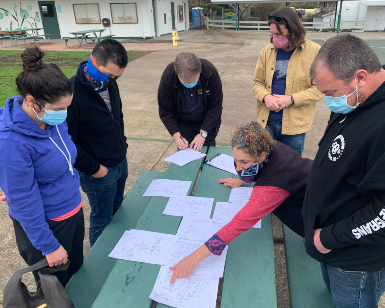San Rafael, CA – Affordable high-speed internet connectivity has been a long standing problem for many West Marin residents, and it became more urgent when the COVID-19 pandemic prompted shelter-in-place orders and pushed education and work online at unprecedented rates.
 Approximately 75% of students living near the Pacific coast between Muir Beach and Dogtown – most living in Bolinas and Stinson Beach – did not have a home internet connection that allowed them to participate fully in distance learning.
Approximately 75% of students living near the Pacific coast between Muir Beach and Dogtown – most living in Bolinas and Stinson Beach – did not have a home internet connection that allowed them to participate fully in distance learning.
Now, through a collaborative effort with the Bolinas Stinson Unified School District, key community members, and nonprofits, the County of Marin and its partners are opening the spigot of bandwidth for those living and working along the rural Pacific coast.
With urgency to provide a solution quickly to address new challenges brought on by the pandemic, a community group called the Bolinas Stinson Union School District (BSUSD) Connectivity Committee was formed in August of 2020 by Georgia Woods, a school district trustee, to tackle the lack of broadband internet for children in the district during the depths of distance learning. The committee partnered with local government organizations as well as Marin County Board of Supervisors President Dennis Rodoni, who represents West Marin.
More than $200,000 was raised to fund internet accessibility, including installation and monthly service subsidies, for all full-time families living in the district with school-aged children. Funding partners in the project are the BSUSD ($65,000), an anonymous donor ($20,000), the Marin Community Foundation ($40,000), and the Pincus Family ($100,000).
Javier Trujillo, Chief Assistant Director of the Marin County Information Services and Technology (IST) Department, said, “The Pincus Family’s donation in March helped us achieve the fundraising goal allowing the project to move forward. As with all successful projects, there are many contributors doing their part, and we are grateful for this collaboration. It’s a significant step in Marin’s overall connectivity and its equity efforts.”
BSUSD Superintendent John Carroll said the lack of internet access was the most profound obstruction to educational equity for the district’s students over the past year. Approximately 75% of students living near the Pacific coast between Muir Beach and Dogtown – most living in Bolinas and Stinson Beach – did not have a home internet connection that allowed them to participate fully in distance learning. The digital divide, between those who could afford and obtain internet service and those who could not, created a clear equity issue that the school and committee wanted to address: 35% of English-speaking students experienced persistent connectivity difficulties during distance learning, but 80% of children in Spanish-speaking homes had a consistently unacceptable experience.
Nearly half of the district’s students qualify for the federal free and reduced-price lunch program and about 75% of BSUSD families earn less than Marin's median household income. As a predominantly low-income community, the school's families not only needed access to high-speed internet but needed it to be affordable.
Even prior to the pandemic, Trustee Woods was already concerned that the rural digital divide disadvantaged students at the school. Woods said she was shocked to discover in 2018 that a recently hired teacher recruited from Mill Valley had to amend curriculum and cut-out much of the digital content to accommodate the majority of students who could not readily access the material. Woods said she dreaded the idea of distance learning, appreciating how poorly positioned the school was for online learning success. Once it was clear that the 2020-21 school year would commence fully in distance-learning mode, she was motivated to form a district-led Connectivity Committee. District parent volunteer Chloe Sladden, also passionate about eliminating the digital divide, helped spearhead the committee.
The Connectivity Committee quickly appreciated that no high speed internet options existed in the areas where the vast majority of families live, and that left to market forces alone, any future service would be expensive and unaffordable to a majority of school families, potentially only acting to exacerbate the digital divide in the coming years. In order for their efforts to succeed they would have the tall task of finding providers both willing to expand their service in this rural community and who were committed to offering low-income plans.
 Members of the Bolinas Stinson Union School District (BSUSD) Connectivity Committee played a huge role in the project, including the mapping of fixed wireless equipment to help bring low-cost internet access to coastal residents.
Members of the Bolinas Stinson Union School District (BSUSD) Connectivity Committee played a huge role in the project, including the mapping of fixed wireless equipment to help bring low-cost internet access to coastal residents.
The committee spent six months researching technologies, surveying families, negotiating lower rates and low-income plans with vendors, fundraising, and then built a solution for long-term affordable broadband for all. By partnering with Muir Beach LAN and Horizon Cable (both Marin companies committed to offering affordable and low-income plans), the committee made reliable internet access a reality for every student in the district with the support of the school board, private donors, and school staff.
“This project has been one of the greatest success stories of this extremely challenging school year,” Carroll said. “The home-grown combination of research, testing, fundraising and sheer dogged determination paved the way for internet access that allows every student, regardless of income, to participate equally in all online learning activities.”
Rodoni said the affordability factor on the broadband service couldn’t have advanced without a commitment by the District Connectivity Committee. In Bolinas, one of the primary targeted areas for the upgrade, 65% of residents qualify for the low-income subsidy. Households that qualify for low income rates will have access to the service for $5 per month.
“Until the committee’s involvement, residents in that area were paying up to twice as much as the Marin average for internet service and low-income plans were not available,” Rodoni said. “Our community needs internet prices comparable to the rest of Marin and desperately needs low-income plans.”
Trujillo said another major hurdle was cleared to provide the Bolinas-Stinson area with high-speed internet access. It started in 2018 when the California Public Utility Commission (CPUC) awarded a grant to Inyo Networks, Inc., to provide a Bolinas Gigabit Network Project in the amount of $1.8 million to construct a new last-mile broadband infrastructure in Bolinas. The project stalled but through the work of the BSUSD-CC was resurrected to provide a long-term solution for the Bolinas-Stinson community that ensures a transition from fixed wireless to future-proofed fiber for almost all residents.
The grant required matching funds of approximately $1.2 million. At the beginning of this year, Leighton Hills, Board Director of Muir Beach LAN, agreed to a joint venture to complete the project. Implementation is to begin this summer. Muir Beach LAN, which stands for local area network, has been serving high-speed internet for Marin’s coastal areas since 2004.
“We know of rural programs in other parts of the state and country that have struggled and sought innovative solutions,” Sladden said. “With the growing focus on broadband legislation in California and in the federal government, these efforts feel like great community-specific illustrations of why this legislation matters. We are a part of the broader story of how rural communities are solving the digital divide in creative, boot-strapped ways.”